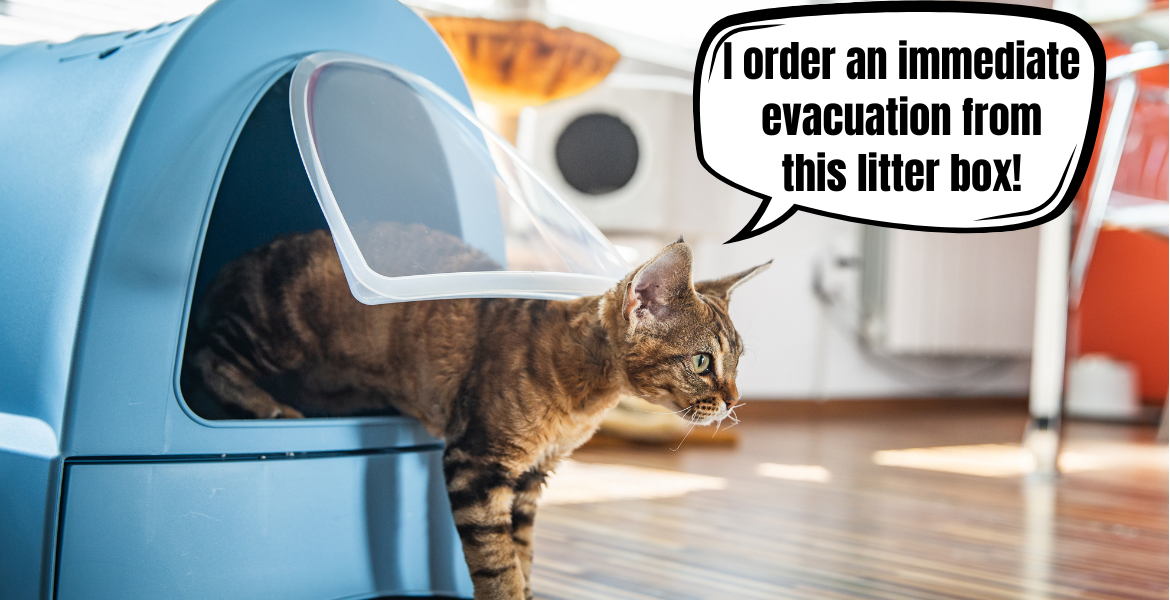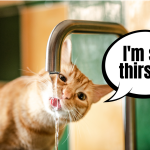Do you know that moment, fabCat, when you hear your cat furiously scratching in the litterbox and already know that a furry tornado is about to sweep through your home? While this behavior isn’t typical for all cats, many felines leave the litterbox at express speed after doing their number two. Why? Let’s search for answers together!
Post-litterbox crazies or a health problem?
We need to address this important matter right from the start. A cat dashing out of the litterbox might simply be having a case of the crazies, as if fulfilling its physiological needs suddenly unleashed a burst of new energy. However, such behavior can also be a clear sign of health issues and discomfort experienced by the cat. So never assume your cat’s litterbox sprints are a “that’s just how my cat is” kind of thing. Check what they’ve left in the litterbox, observe their behavior when they enter, and if you notice any signs of discomfort, uncertainty, or problems—head straight to the vet.
Feline joy after a litterbox visit
Before we move on to serious matters related to feline health, let’s start with the enjoyable stuff—the case where a cat experiences post-litterbox crazies simply because they’re happy. Let’s face it, taking care of business brings a sense of relief. And if a cat really had to go, the sense of lightness after finishing their business can give them a boost of positive energy. Moreover, a proper visit to the litterbox stimulates the vagus nerve—no wonder cats immediately feel energized and ready for mischief!
What can you do, fabCat? Pure excitement not fueled by pain, discomfort, or litterbox issues is the only time when you really don’t have to do anything. Well, maybe aside from placing a mat under the litterbox to catch stray litter, because feline joy can spread it everywhere.
When a cat suffers in the litterbox
Unfortunately, here’s where it gets tricky, as there can be several unpleasant reasons for a cat’s quick evacuation from the litterbox, including:
- Health issues such as urinary tract infections, infections, constipation, diarrhea, or kidney problems. This is why it’s so important to observe your cat and read their body language. How do they behave after entering the litterbox? Do they take care of business right away, or does it seem difficult and require several attempts? How often does the cat visit the litterbox? What do their stools look like? Your attentiveness and quick action with a vet can save your cat’s health, fabCat.
- Inappropriate litter. Unfortunately, this is still an underrated issue, but cats can be very picky when it comes to the material filling their litterbox. Ideally, the litter should be fine-grained, unscented, not overly dusty, and allow for easy burying of the treasures left in the litterbox while also masking their scent. Such toilet conditions are the most natural for cats, and while we humans might prefer aesthetically pleasing and fragrant litter, the cat’s needs always come first.
- Stress. Do you have two or more cats at home, and one of them regularly dashes out of the litterbox as soon as they’re done? Be careful, fabCat—this could be a sign of issues within the feline group. Such an escape might be driven by a survival instinct and a desire to distance themselves from the litterbox to avoid being blocked in by other cats. For this reason, a well-placed litterbox always provides the cat with an opportunity to escape in more than one direction. Remember, the litterbox is one of the key resources for a cat. It should never make the furry one feel like a victim waiting in panic for a predator’s attack.
- Unpleasant odors. These bother not only us humans. So, fabCat, don’t delay cleaning the litterbox until the litter forms one solid clump—scoop out waste regularly, at least once a day (if not more often). Both you and the cat will benefit from this.
PS. If the litterbox has such an intense smell after a visit from your cat that no one wants to go near it, this could be a sign of health issues or a poor-quality diet. Submit samples for testing to your veterinarian and consider switching your cat to a better, high-meat-content food.
Summary
The litterbox is one of the most important resources in a cat’s territory—it allows them to take care of their needs, and the scents left in it are also the best way for a cat to mark their territory. So, ensure that your furry friend feels as comfortable as possible in it. Make it large, with multiple entry and exit points, filled with a litter that’s pleasant for their paws, and keep it regularly cleaned. If your cat dashes out of it in a hurry but isn’t experiencing discomfort—let them be a cat, plain and simple. However, if you notice something off about your cat’s behavior, remember: better safe than sorry. Take them for a check-up at the vet and make sure the wild litterbox sprints are just an expression of feline gratitude for their newfound sense of lightness.




